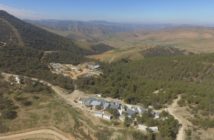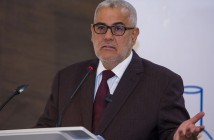
The tiny amount of oil extracted from each cactus fruit makes Barbary fig oil the most expensive on the market. By Abdelhak Senna (AFP/File)
RABAT — Barbary fig oil, celebrated as an effective anti-ageing skin potion, is following argan oil as a great new cosmetic export from Morocco.
But the tiny amount of oil extracted from each cactus fruit makes Barbary fig oil the most expensive on the market, about a 1,000 euros ($1,440) a litre.
Beyond its cosmetic virtues, the United Nations is urging Morocco to develop the cactus plant in a country where 80 percent of farming is carried out in arid or semi-arid regions.
The push to develop Barbary fig, a cactus fruit well-adapted to extreme weather conditions, comes with a belief that several revenue streams could stem from it.
If successful, the cactus could stand as a business model to other countries looking for cash crops suitable to inhospitably hot climates.
Eight tonnes of the Barbary fig fruit — sometimes known as prickly pear — are needed to produce a litre (quart) of oil used for cosmetics, said Karim Anegay, head of the cactus programme at the economic promotion office for southern Morocco.
“This oil is commercialised by Moroccan companies as its anti-ageing virtues are of excellent quality but it’s still early days,” he said.
In Casablanca, cosmetics company Azabane uses Barbary fig oil in shampoo and creams.
Redouane Stouti, a 27-year-old entrepreneur, owns a farm in the Errhamana region, where he produces 10 litres a month from his vast plantation.
“With the help of a machine, the fruit seeds are pressed as is,” he said.
“I have 20 points of sale in Morocco under the ‘Coeur de Figue’ appellation,” he said as he toured a series of alleys where about 30 women were picking the thorny fruit.
Researcher Mohamed Boujnah said the oil was “rich in Vitamin E with a great anti-oxidant power”.
Sofia, a 50-year-old customer, said the oil was “wonderful”.
“Ever since I’ve used it I’ve seen an improvement and elasticity in my skin,” she said.
In the Gulemim and Sidi Ifni regions, both extremely arid, Morocco began an ambitious programme to increase cactus production.
The UN Development Programme (UNDP) contributed $1.7 million to the program and provided technical assistance, said El Kebir Alaouoi M’Daghri, the programme director.
Annual production of Barbary fig fruit in Morocco is 1.2 million tonnes from 150,000 hectares (370,000 acres) of plantations, mostly in southern regions.
Originally imported from the Americas in the 16th century, the cactus and its fruit are used traditionally, often as food. Orangish-red when ripe, the fruit’s juicy insides taste something like a very sweet watermelon.
UN experts say the fruit can even be used as sustenance during famines.
In southern regions, “conventional farming can no longer provide added value and that is why we have found cactus cultivation as an alternative,” M’Daghri said.
The Sidi Ifni province recently held a festival to promote the cactus fruit, and the UN-backed program is currently building installations to improve production of Morocco’s latest agricultural initiative.
Copyright © 2011 AFP. All rights reserved.
http://www.google.com/hostednews/afp/article/ALeqM5h1ElxnMjOfPTJ_-wNpLcaRcxqd5w?docId=CNG.8481f2638fc15e77eddc1468fae105af.3f1






